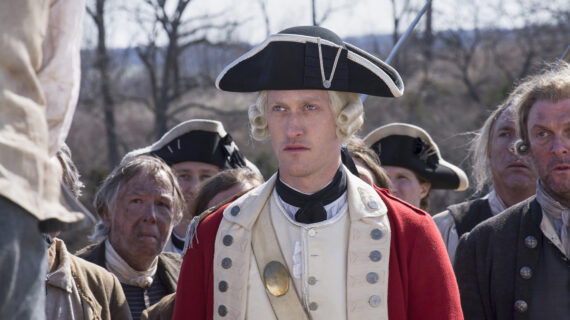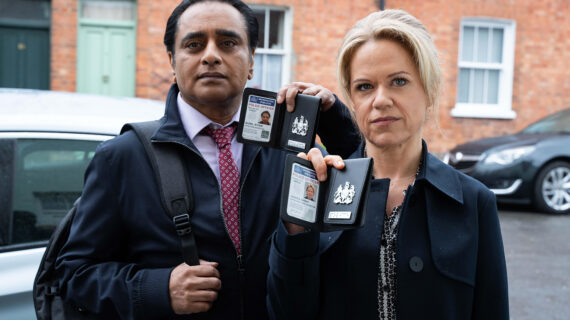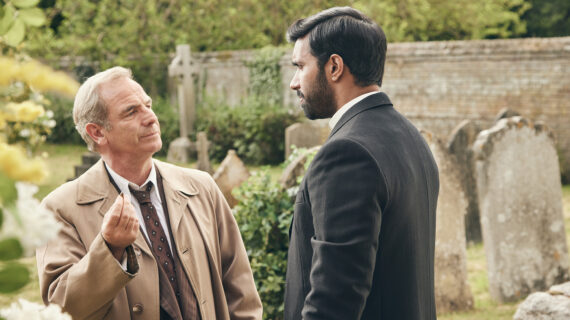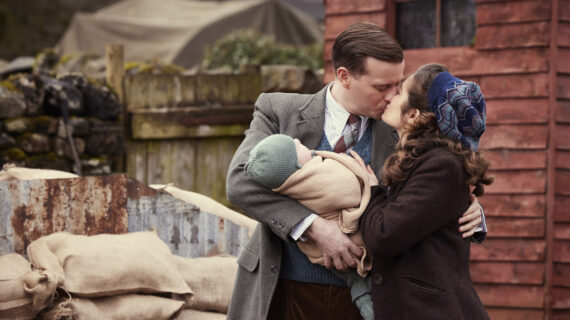[Katie Schumacher, Wisconsin Historical Society]
Today we are pleased to introduce Professor John Hall as part of the Wisconsin Historical Museums History Sandwiched In lecture series. The opinions expressed today are those of the presenter’s and are not necessarily those of the Wisconsin Historical Society or the museum’s employees. This program is being brought to you through a partnership that reflects the spirit of the Wisconsin Idea. And I would like to thank the U.W.-Madison Speakers Bureau for helping arrange this talk, as well as Dr. Hall, who is donating his time to be here today to discuss the Black Hawk War with us.
John W. Hall is the Ambrose-Hesseltine Associate Professor of U.S. Military History at U.W.-Madison. He holds a B.S. in history from the U.S. Military Academy at West Point and a PhD in history from the University of North Carolina Chapel Hill. He specializes in early American military history with particular emphasis on partisan and Native – Native American warfare. He is the author of Uncommon Defense: Indian Allies in the Black Hawk War and numerous essays on early American warfare, including An Irregular Reconsideration of George Washington and The American Military Tradition, which won an Army Historical Foundation Distinguished Writing prize. Here today to discuss the Black Hawk War in Wisconsin, please join me in welcoming Dr. John Hall.
[applause]
[John Hall, Associate Professor, Department of History, University of Wisconsin-Madison]
Thank you.
Thank you for that warm introduction and thank you also for being here today. Nice crowd in this room. I apologize for the people in standing room only. I’ll try to keep it lively though, so if you’re on your feet, you won’t necessarily notice it.
Black Hawk war is a significant chapter in Wisconsin’s history. Most people seem to acknowledge that. At the same time, most people tend to know very, very little about the Black Hawk War other than the fact that it took place in Wisconsin sometime in the distant past.
The associations that we have with the Black Hawk War are often peripheral, not directly related with the conflict. Now, if you have a military background, like I do, you oftentimes hear the words Black Hawk, and the first thing that comes to mind is not a war fought in Wisconsin in the 1830s but rather –
[Male audience member]
A helicopter.
[slide featuring a photo of a UH-60 Black Hawk helicopter flying over a desert]
[John Hall, off-camera]
– a utility helicopter. The UH-60 Black Hawk helicopter, which is in fact named after Black Hawk. All of the Army’s helicopters have nicknames that are derived from Indian peoples. Most of them, however, are named after tribes. This is the one that I can think of that’s actually named after an individual.
If you are a hockey fan, also like me –
[laughter]
– of course, the name also evokes a little franchise –
[the slide animates on a photo of Bobby Hull and other Chicago Black Hawk players sitting on the bench during a hockey game]
– down the road in Chicago. If you’re a Wisconsin native, like me, and I suspect probably a great many of you in the room, the name also evokes countless –
[the slide animates on a photo of the Black Hawk Motel near the Quad Citites]
– businesses between here and the Quad Cities, not to mention towns, parks, roads, et cetera, named after Black Hawk’s Sauk tribe.
But if you’re a student of this brief period of American history who has actually read something about the war or visited sites along the campaign trail, you’re likely also aware that one Abraham Lincoln –
[the slide animates on a painting of Abraham Lincoln as a soldier standing in front of Illinois volunteer troops]
– served as a captain of Illinois volunteers during this conflict. And I mentioned the peripheral associations, and this is probably the biggest one, is that this is the conflict in which Abraham Lincoln gained his limited military experience. And there were a number of other notable figures from the Civil War who were junior officers during this conflict.
[John Hall, on-camera]
Out of this conflict we see a future president of the Confederacy in Jefferson Davis, a future President of the United States in Zachary Taylor, another future President of the United States in Abraham Lincoln, but these are footnote references. They have nothing to do with the war itself, rather that it’s about the people who served there and what they went on to do in their later careers.
So, what else do we really know about what I am going to tell you is the most significant conflict of the historical era to be waged within the boundaries of what we now call Wisconsin? What was the war really over? And what did it mean for the inhabitants of this region then and subsequently? It’s my privilege to answer these questions, or help answer them I think, for you this afternoon. And I’ll begin why telling you why anyone, citizen of Wisconsin or not, should care about the Black Hawk War.
First of all, it ended a 200 year long struggle for control of the Upper Mississippi Valley and western Great Lakes. Second, this war is fairly typical of America’s wars of colonial conquest during the 19th century. Note: I’m not talking about the colonial era of American history, Plymouth, Jamestown, the chopping down of cherry trees and what have you. Rather, I am talking about the era in which the United States itself becomes a colonizing power and extends its dominion in increments over the continent moving mostly westward. Finally, for those of you who read history with an eye toward current events, the practical, ethical, and moral challenges of this colonial war bears striking similarities to those the United States has faced in the 21st century and seems destined to continue to face in the foreseeable future.
One of the ways in which it is similar is that it wasn’t really a single war but rather the intersection of conflicts that predated the interjection of colonial power along with that colonial power’s war of conquest. Thus, while most accounts of the Black Hawk War begin in 1804 when future President of the United States William Henry Harrison fleeced the Sauk and Meskwaki tribes of a huge swath of land, basically all of their holdings in western Illinois, we today are going to go back a little bit deeper to the origins of some of these inter-tribal conflicts that became intertwined with the United States’ war of conquest in the old northwest.
Back to the so-called Beaver Wars of Iroquois expansion, westward mostly –
[slide labelled – Plate 35 – The Great Dispersions, 1648-1653 – featuring a map of the Northeastern United States and showing the dispersal of Native American tribes from this area to points north and westward. Additionally, the map shows red arrows emanating out of the Iroquois dispersal indicating Iroquois offensives against other Native tribes and European settlers on their way north and west. Additionally, the other Native American tribe dispersals are indicated in an olive-brown color to indicate Native tribes fleeing from the Iroquois Confederacys conquests]
– out of New York in the 1640s to the mid-1660s. But what you can see here in red –
[the slide animates the dispersal movements of the Iroquois nation to a red color to differentiate them from the rest of the Native nations indicated on the map. The heart of the traditional Native American settlements on the East Coast and southeastern Canada are indicated on the map in a pink hue.]
– is the Iroquois heartland –
[indicating on the map the red circled area of the traditional homeland of the Iroquois from which they dispersed with the mouse pointer]
– which is in the middle of what is today the state of New York, and then the Great Lakes are right out here to the west. The red arrows depict Indian offensives. Iroquois offensives in search of new beaver furs to feed a global fur trade economy. In search of martial conquest for the glory of the warriors that are part of the Iroquois Confederacy and in search of captives to be adopted into the Iroquoian tribes to replace –
[John Hall, on-camera]
– the fatalities, the casualties of the preceding wars of conquest.
Now, there are another set of arrows on here depicted in sort of an olive-brown. Those depict the flows of refugees away from this Iroquoian onslaught. And you can see the direction that –
[return to the slide with the map labelled – Plate 35 – described above]
– most of them flow, westward, emptying the Great Lakes of Iroquoian enemies. And the refugees from them move ever and ever west across the Great Lakes until most of them settle, many of them rather, settle in an era depicted here –
[the side animates on a bracket on the map to indicate where most of the Native nations fleeing from the Iroquois ended up which is indicted on the map with a yellow circle that encompasses Green Bay and the Fox River Valley in what is now Wisconsin]
– by this yellow circle. Can anybody tell me where this yellow circle is – is depicted?
[Female audience member]
Wisconsin.
[John Hall, off-camera]
It’s in Wisconsin.
[Male audience member]
Lake Winnebago.
[John Hall, off-camera]
Lake Winnebago. Specifically, the Fox River Valley. So, it’s from the head of Green Bay, up the Fox River, encompassing Lake Winnebago. That is the home to many of these refugee populations as they move west.
Here in the Wisconsin country, the indigenous Menominees and Ho-Chunks were first gracious hosts to these interlopers, but the refugees outnumbered them –
[John Hall, on-camera]
– and soon they taxed the ability of these lands to provide sustenance for such a large refugee population. In the so-called shatter zone then, the French and the Indians who resided there assembled a remarkable intercultural alliance that would last over a century and challenge Great Britain for dominion over the eastern half of the continent.
This alliance was constructed on what one historian has indelibly described as a middle ground of mutual understanding, mutual misunderstanding, and mutual need. In both military and economic terms, the French and the Indians of the western Great Lakes were genuinely interdependent with one another. And this creates the bonds of a viable and truly cooperative alliance. A remarkable alliance with few precedents in the western hemisphere.
This isn’t to say that Great Britain did not have its own Indian allies or that all of the Indians were particularly fond of the French. The Meskwakis, who we better know perhaps as the Fox Indians –
[slide titled – The Fox Wars, 1712-1737 – featuring a painting of Native Fox Indian warriors sneaking up on a Fort. Additionally, there is a multicolored map of the Upper Midwest indicating the locations of the Native American tribes in the area. The Dakotas in western Minnesota; the Iowa in Iowa; the Ojibwa in southern Ontario, northern and eastern Minnesota, northern Wisconsin, and the Upper Peninsula of Michigan; the Menominee in northwest Wisconsin; the Winnebago in the Fox River Valley and part of central Wisconsin; the Mesquakie in western Wisconsin; the Sauk in southern Wisconsin and northern Illinois; the Potawatomi encircling Lake Michigan in Wisconsin, Illinois, and Indiana; the Kickapoo and Mascouten in east central Illinois; and the Illinois in southern and western Illinois]
– had been driven out of the Michigan peninsula, the lower Michigan peninsula, by their own Indian enemies, the Ojibwas, in the early 1600s, pushed westward into Wisconsin. They didn’t get along real well with their neighbors. So, they’re pushed even further westward where they run into the Dakotas, the easternmost Sioux tribe in eastern Minnesota and promptly become enemies of the Dakotas. With no friends to be found, the Meskwakis settled into the role of essentially pirates on Wisconsin’s waterways, on the Fox and Wisconsin Rivers, charging tolls, essentially, for any trade that trafficked those waters despite the fact that they were not indigenous to the region.
This complicates the French and Indian alliance. And so, the French try to mitigate this problem by inviting the Meskwakis to move eastward to their new trade hub at Detroit, where everybody can partake of –
[John Hall, on-camera]
– this – this great fur trade and an alliance centered around France rather than Great Britain. Unfortunately for most the parties involved at Detroit, the Meskwakis proceeded to make nuisances of themselves there and finally exhausted French patience.
Now, going back to what most of us know about this era of history, most of us have at least some grasp of the idea that the French got along with the Indians far better than did British colonial subjects or the British government. That they – and by some accounts I read, they were more culturally tolerant. They were more willing to let the Indians be Indians. And that’s true within reason. But the reason is because they are genuinely economically dependent and militarily dependent on these Indians. And because of that, because of that, they’re going to be a lot more tolerant. But when an Indian tribe is complicating the economic and military alliance, the French can be just as terrible as any other European colonizing power in North America.
Consequently, between 1712 and 1737, the French and their Indian allies waged nearly genocidal wars against the Meskwakis to get rid of this destabilizing nuisance. Eventually, the Meskwakis confederated with the Sauks as a mere matter of survival. By the end of the 1730s, both tribes had been driven into northwestern Iowa where they remained surrounded by enemies but nevertheless were able to carve out for themselves a homeland that they would retain for the next century.
Yet, the entire region remained in a state of perpetual, if low level, conflict between various and partially overlapping Indian alliances. White observers would often describe these inter-tribal conflicts as ancient animosities without bothering to uncover the causes. It’s just an ancient hatred they have for one another. And in some cases that was true, but in other cases these animosities were actually derivative of the colonial contest to control North America.
The most important contests, inter-tribal as it pertains to the eventual Black Hawk War, were these. The Dakotas, the easternmost Sioux, and the Menominees despised the Sauks and Meskwakis, and vice versa. In the middle of them all, depicted on this map as Winnebagos –
[return to the slide labelled – The Fox Wars, 172-1737 – described above]
– call themselves the Ho-Chunks or The people of the big voice. The Winnebagos intermarried with all of their neighbors and, hence, had relationships based on kinship with every tribe in the region. And that bond, even more than economic interdependence, is going to form the most stable, the most enduring bond of alliance, that of kinship. Blood, as they say, is thicker than water. So, as a consequence, we have Menominees and Dakotas on the one hand, and there’s Sauk and Meskwaki enemies on the other. The Ho-Chunks really were geographically and figuratively in the middle of this. And they had very divided and complicated loyalties as a consequence.
Now, despite these inter-tribal animosities, and the fact that they were usually at low levels of war with one another, this did not prevent most of them from allying together with Great Britain against the United States during the War of 1812. Although the French had been vanquished from the continent at the end of the French and Indian war in 1763, the Indians of this region remained in need of a European trading partner. And they also needed –
[John Hall, on-camera]
– a military ally to help them against the wave of American settlers that were pushing ever westward. They got this ally from a rather unexpected source in the form of Great Britain, which itself was very willing to step into that role, previously played by the French, of providing the economic partner, and itself was trying to constrain the westward expansion of its colonists in the name of stability. Because westward expansion by colonists was creating the conditions for another war which Great Britain did not want in 1763.
So, the most ardent of these Indian tribes, which generally allied with Great Britain, were the Sauks. And among them the most inveterate foes of the United States were the so-called British band, who had as their captain a Sauk war leader named Black Hawk, who we’ll come back to shortly.
Black Hawk and his confederates were understandably disappointed then, when, after the War of 1812, they, in their own battles on the western Mississippi –
[slide titled – Treaty Council at Prairie Du Chien, Michigan Territory (Wisconsin), 1825 – featuring a contemporary painting of the tribal treaty gathering of Native peoples with the U.S. Army at Prairie Du Chien]
– felt that they had fought the Americans to a draw. They did not feel that they had lost the War of 1812. Some of them had stood with Tecumseh and lost at the Battle of Prophetstown. But most of them remained undefeated at the end of the war and fully expected that the relationship that they had had with the British would continue. They were understandably disappointed, therefore, when the British at the Treaty of Gent essentially abandoned all of their American Indian allies to the mercy of the United States.
Nor was Black Hawk or the members of his British band won over by the United States’ professions of friendship after that conflict. Offering the Indians of the region treaties of peace and friendship and offering also to fill that role of trading partner and military ally. One of the reasons they didn’t trust it is because right after the war the U.S. military began to construct a string of posts across Indian lands in Wisconsin. This one here predated it at – at Fort Crawford, but they reinvested in it, and they constructed Fort Howard in Green Bay in 1816.
But these are the Sauks that I’m talking about, the ones that are highly distrustful of the Americans. Most of the other Indian tribes in the region have no other good options. The French are gone. The British are gone.
[John Hall, on-camera]
They are now engaged in a global marketplace. They are now largely dependent upon European manufactured goods. They need a new trading partner, and the United States is offering to be that trading partner. And in critical regards, the promises being made by the Americans have echoes of the diplomatic language that was used previously by the French and by the British.
In terms of economic integration, there seems to be little difference whatsoever. In fact, the United States actually institutes a government-controlled fur trade program, which actually competes with the private industry, in order to give the Indians fair prices and draw them into the orbit of the United States; the so-called factory system of federally-run trading posts with federal officials who conduct the trade with them.
The United States government, kind of a garrison government, imposing some measure of martial law out here in the west, also relies upon Indian laborers because all they have are U.S. Army troops who can only do so much of the day-to-day work of maintaining these garrisons. And so, federal officials out here in Wisconsin hire Indians as hunters to supply their camps with meat, and sometimes they even employ American Indians as bounty hunters to chase down deserting American soldiers, which is an endemic problem in the army of this era. 30% desertion rates and things like that. And so, Indians will track deserters to Chicago, and then point out the deserters to other federal officials there. So, there’s economic integration after the War of 1812.
The ceremonies that the U.S. uses to conduct diplomacy, moreover, are borrowed wholesale from the British and the French before them. By design, they adhere to the protocols and to Indian expectations of what treaty negotiations and formal diplomatic proceedings are supposed to look like. Now, what’s depicted here in the 1825 Great Treaty Council at Prairie Du Chien is you can see on the right-hand side of the slide, back here in the distance, a bunch of U.S. Army soldiers in their blue dress coats, white pants, and their cockaded hats on parade.
[return to the slide labelled – Treaty Council of Prairie Du Chien, Michigan Territory (Wisconsin), 1825 – described above]
Now, originally, when the U.S. entered this region in military force after the War of 1812, these kinds of martial displays were intended to awe the Indians. To let them know that a new heavy was around, and they ought not get any ideas in their head of reigniting the flames of war. But over time it occurred to many U.S. Army officers to include a senior commander in the west, Edmund Gaines, that these martial displays, they weren’t cowing the Indians, they weren’t scaring the Indians. Quite the contrary. They were appealing to what Gaines called the Indians chivalric spirit. In other words, the Indians were themselves a fairly martial people, and these martial displays convinced them that the United States was a military ally worth having after all, even if they were a little skeptical about why the Americans needed to construct new military posts amongst them.
Another sign of continuity from the old order was the fact –
[John Hall, on-camera]
– that most of these federal officials, both Army officers and, to an even greater extent, officers – officials, rather, of the Indian Office, so the colonial office of the War Department of this era, took Indian common law wives. Forming, again, those enduring bonds of alliance, the bonds of kinship. And it’s a very commonplace activity. In fact, at one point in time, it’s reputed that at Fort Snelling, Minnesota, another new post that they construct after the war, all but two of the officers at that post have common law Indian wives. Needless to say, the marriages did not last long, but the children that were products of those marriages lasted a lifetime. And they seemed to suggest to the Indians more similarity, more continuity, rather than discontinuity.
Also, in terms of justice, I describe this era as one of being sort of one of – of martial law. Civil law is subordinate to military law at this point, much to the chagrin of a lot of the very early white settlers who were in the state. But this actually encourages the Indian populations, who see the army as an instrument for upholding the letter of the law of these treaty negotiations and protecting Indian rights, property, and indeed, for a while, even sovereignty.
There’s one notable case at Fort Howard in Green Bay where a notable Menominee chief named Poegonah is stabbed in the thigh by a drunken U.S. Army soldier with his bayonet. Poegonah grabs the army trooper by the neck, curses him for a dog, throws him to the ground, and tells him were he not a U.S. Army soldier he’d be a dead man. Now, how might we surprise – suppose that the commander of Fort Howard responded to this episode? I’ll tell you how he responded, by having that soldier publicly whipped in front of an assemblage of his own troops and Menominees. A clear signal, a clear signal that the U.S. government, at least while it’s under this version of martial law, will not tolerate these kinds of transgressions against Indians. All of these things suggested to the Native populations of this region that those treaties of peace and friendship extended after the War of 1812 were sincere and that the middle ground perhaps had survived after all.
In their experience in the first decade of American occupation, little suggested to them that their great father, the metaphor that they used to describe the President of the United States, reserved any special treatment for his white children. It suggested instead that the middle ground constructed by the Indians and the French and that had been persevered or persevered rather in some semblance under the British regime, was still viable, could still be occupied in the years after 1815.
There were, however, some very alarming departures from the earlier practices of the French and the British. One was what we would today call peace enforcement and another what was then called the civilization program. Now, the civilization program is at the foundation of federal Indian policy from the founding of the republic, at least with the Constitution, all the way through the 1930s. And this policy is designed to ethnically and culturally erase Indians by teaching them to live like mainstream Anglo-Americans in terms of their economy, in terms of their culture, in terms of their gender roles. And the idea was – this was before very rigid senses of anti-Indian racism had – had emerged in the United States – the idea was that the Indians were not destined to be racial inferiors forever, that they were merely culturally retarded. And if we can give them an accelerated program of learning, we can lift them up the ladder of civilization so they can catch up with the rest of us and then they can intermarry with us and then there will be no Indians and we won’t have to pay all kinds of money for Indian lands and things like that. That’s the civilization program, and that is the task of those agents of the Indian Office who are assigned to this region after the War of 1812. Taken together, we might today consider these activities part of nation-building. And it was no easier then, than it is today. No matter the time or the place, people seem less than fond of foreigners coming in and telling them how backward they are. They are even less fond when those foreigners are also intent upon taking away the indigenous population’s land and sovereignty.
Even before it was clear that this was the United States’ ultimate objective, American colonial officials, agents of the Indian Office again, were very explicit that the Indians were to stop making war on one another and give up hunting in favor of small plot agriculture. From the position of the U.S. government, these changes would both stabilize the region and enable the Indians to sell off their surplus lands, because farming takes less land than hunting and trapping, to the government, and the government would in turn sell these lands then to white settlers.
But the Indians weren’t so fond of the civilization program. Particularly Indian men whose manhood was defined by two ventures, making war and hunting. And, hence, the civilization program is telling Indian men not only are you backward, but to move forward you will have to become women by becoming farmers, because thats what – was the business of – of Indian women in these cultures before the Americans arrived.
Complicating matters even further, white lead miners flooded northwestern Illinois and southeastern Wisconsin in the late 1820s, abusing the Native populations and provoking a war with the Ho-Chunks in 1827, the so-called Winnebago War or Red Bird’s War. The following year, these miners and men like them elected Andrew Jackson to the presidency –
[slide featuring a map of the Native Americans tribal settlements in the early 1800s in the Midwest – with Ojibwa in northern Wisconsin and central and northern Minnesota; the Dakota in southern Minnesota and Iowa; the Sauk and Mesquakie in Iowa, the northwestern corner of Illinois, and southeast and south-central Wisconsin; the Ho-Chunk in central Wisconsin; the Menominee in northeastern Wisconsin; the Potawatomi and Ojibwa-Ottawa in eastern Wisconsin and northern Illinois and Indiana. Also highlighted in red on the map is the Lead Mine Region in the driftless area of Wisconsin and far northwestern Illinois in the Sauk and Mesquakie territories, south of the Ho-Chunk territories. On the right-hand side of the slide are a painted portrait of President Andrew Jackson and a painted portrait of Chief Black Hawk]
– with doleful consequences for the security of the Upper Mississippi Valley.
To this point, the Indian agents had acted as sort of metropolitan colonial officials, intercultural brokers, trying to preserve some semblance of the middle ground. And they often had longstanding economic and matrimonial ties with the Indian populations with whom they worked. But Jackson didn’t care for these men’s divided loyalties, and he had patronage to dispense. So, by September of 1831, he had replaced fully half of the – of his 56 Indian agents and sub-agents with unqualified party hacks. Those bonds of kinship, those economic bonds, poof, half of them are gone, and the agents are good Jackson men. And I don’t need to tell most of you the historical consensus about Jackson’s attitude about Indians.
Perhaps not surprisingly, Indian relations took a marked turn for the worse in 1830 and 1831, and inter-tribal violence escalated. The first notable event on the road to the Black Hawk War in this regard occurred in May of 1830 when 50 Dakotas and their Menominee allies killed 16 Mesquakie Indians on their way to Prairie du Chien.
The next summer, in July, the Mesquakies retaliated themselves, killing 25 Menominees. The Menominees felt that they had evened the ledger of blood with their initial attack, and now they were at a disadvantage. And so, naturally, they are going to spend the winter of 1831 and 1832 plotting their own retaliatory spring campaign. It is this inter-tribal conflict that actually starts the conflagration –
[John Hall, on-camera]
– that will become the Black Hawk War. Indeed, when the U.S. Army General in charge of, eventually the Black Hawk War receives his orders to march, to sally forth out of Jefferson Barracks, Missouri, with the available force there, his orders are not to chase down Black Hawk, who hasn’t done anything outrageous at this point in time. Rather, he’s moving up the Mississippi River with a large force of regulars in order to perform a peace enforcement mission. To prevent the Menominees from going to war against the Sauks and Mesquakies, and to apprehend the 50 to 60 perpetrators of the most recent attack, those Mesquakies who have taken refuge with Black Hawk’s British band.
Now, Black Hawk by this point is no stranger to the federal government. He’s not quite a household name yet, either. I guess I would describe him as a person of interest. A person of significant interest. As I’ve already mentioned, stories of the Black Hawk War usually begin in 1804 with that fraudulent land treaty. Now, the Sauks and Mesquakies might have gone to war against the United States earlier, but the U.S. is able to – to stave off the conflict by allowing the Indians the rights of occupancy and usage until such nim – time as they think that they’re going to need the land. In other words, Yes you sold us this land, we hear your protest, we don’t care, the – the ink is dry, the Senate has ratified it, this treaty will stand, but you don’t need to actually move off of the land until we think we’re going to need it. By 1828, the United States thinks they’re going to need it.
And as a consequence of that, the Sauks and Mesquakies both will divide in terms of their political leadership. The Sauks, in particular, will have a mainline peace party, so-called, under the leader Keokuk, which maintains normal diplomatic relations with the United States while the faction that wants to resist this treaty and to continue to occupy these lands in eastern Illinois will become known as Black Hawk’s band or the British band.
This division is very clear by 1831, and Black Hawk refuses adamantly to abide by the terms of the treaty. So, in 1831, he takes all of his followers, and, against the wishes and – and warnings of the United States, migrates eastward, as they do every summer, across the Mississippi to occupy their summer villages in Illinois. And this leads to a panic in Illinois, but it doesn’t lead to an actual war because commander I mentioned earlier, Edmund Gaines, intervenes diplomatically and is able to convince Black Hawk to go back into Iowa. And everybody thinks the conflict has been averted, but it hasn’t. And Black Hawk gets it in his mind, for various reasons that I wont – I don’t have time to go into today, that Great Britain will support him if he goes to war with the United States, as will most of the tribes of this part of the country.
Now, he’s not necessarily intent on war, but he also knows that going into Illinois again is going to be a very provocative action and that the likeliwood – likelihood of war is high. So, why would he take this risk? Because when he crosses, when he crosses again in April of 1832, his band of a thousand followers consists predominately of women and children and elderly people, non-combatants. It’s not a war party. It is a people. It is a society migrating seasonally as they always have done. But he knows this is provocative, but he also thinks, and this is a – a tragic mistake on his part, Great Britain will come to his aid if the United States makes wars against – war against him, as will the Indians of the region.
Now, this move by Black Hawk complicates Atkinson’s mission tremendously. In addition to preventing Menominee retaliation, he now has to attend the more pressing matter of compelling Black Hawk to return to Iowa. And he, like Gaines the year previously, would prefer to do this without going to war. But he makes a huge mistake, a cataclysmic mistake, when he asks the governor of Illinois, John Reynolds, to call up that state’s militia forces. Because the militia of that state felt that they had been ripped off the year previously. They had been denied an opportunity to win their own martial glory by going to war against Black Hawk and his followers, and they are not now about to be denied that opportunity in 1832. So, Reynolds not only calls for volunteers, but he whips the entire state into a veritable panic by depicting this as an armed invasion by a hostile Indian force.
This has tragic consequences for a couple reasons. The first of one – the first rather is one I’ve already let on to. And that is that Anglo-Americans living in the frontier regions of –
[slide featuring three drawings (clockwise from upper left) – a drawing of a traditional cowboy in a black hat standing next to his horse with a walking stick in his left hand and holding the reins of his horse with his right hand; the second drawing is of three foreign mercenaries on horseback, one with a tri-quarter hat and a sword, one sporting a conquistador helmet with a plum, and a third a woman riding sidesaddle in a petticoat and skirt; the third drawing is of a band of citizen soldiers marching in formation carrying pitchforks as well as muskets with bayonets]
– the United States in this era were prone to panic at the slightest rumor of Indian hostilities and they themselves were prone to violent indiscriminate overreaction. Second, in this era any man who aspired to political office in a frontier state or territory improved his prospects drastically if he could establish his bona fides as an Indian fighter. You wanted to make something of yourself? You needed to be a veteran. And the wars you had to choose from were wars against American Indians. Notwithstanding the American government’s insistence that the Indians were supposed to give up their dreams of martial glory, young Anglo-American men were also inclined to make a name for themselves by exploits in war.
So, it’s not surprising that perhaps 5% of Illinois’ male population took up arms as volunteers. Yet they, like the vast majority of volunteers, were hardly renowned for their discipline. The satirical sketch shown here on the slide actually depicts the 1831 drill of the New York Fantasticals who mocked militia regulations and lampooned their own unpreparedness. Not confined to the east coast, Lincoln himself observed similar charades in Springfield, another lampooning kind of parade where the militia is making fun of themselves for their own incompetence. They issued facetious regulations. This is in Springfield, Illinois. One of these regulations read, No man is to wear more than five pounds of codfish for epaulets or more than 30 yards of bologna sausages for a sash, and no two men are to dress alike, and if any two should dress alike, the one who dresses most alike is to be – is to be fined.
[laughter]
I mean, that’s the state – the state of the militia on this part of the frontier. Lincoln himself is – is not one of these men –
[John Hall, on-camera]
– who’s hungry for Indian blood, but he is hungry for higher office. He was then a 23-year-old store clerk from New Salem, Illinois, and he volunteered for the Black Hawk War as a means of advancing his political career. He was rather gangly and bookish compared to most of the other volunteers, but he was also incredibly strong, which won respect from his fellow volunteers and allowed him to be elected to the office of captain. And Lincoln was forever afterward very, very proud. That was the first election that he had ever won. The election to company command by his – his roughneck frontier compatriots.
But while Lincoln was looking for elected office, many of the men he commanded were in fact out for blood. They accomplished their aim, albeit not in the manner in which they would have preferred. In a brief engagement on May 14 –
[slide titled – Stillmans Run, 14 May 1832 – featuring a map of southern Wisconsin and northern Illinois on which is a dotted line indicating the path of Stillmans cavalry starting near Fort Armstrong on the banks of the Mississippi River and heading northeastward along the Rock River to an x on the map in north-central Illinois marked Stillmans Run. In the upper-right of the slide is a photo portrait of Major Isaiah Stillman and below his portrait is and etching of the battle]
– 1832, that seemed to vindicate one regular Army officer’s description of the mil-militia as, that prosopopoeia of weakness, waste, and confusion. Riding ahead of Atkinson’s regulars, a militia cavalry squadron under Isaiah Stillman refused to acknowledge a white flag carried by a delegation from Black Hawk, who by this point in time had agreed to return to Iowa peacefully. Instead, the militiamen fired upon and seized Black Hawk’s envoys, inviting retaliation. In the ensuing route, Stillman lost 11 troopers while Black Hawk lost only three. Having thus started the war Atkinson was supposed to prevent, Illinois militiamen lost – lost their nerve and most refused to reenlist upon the expiration of their 30-day volunteer contracts. Not so, Lincoln, who was still running for office and still needed to establish a reputation, but in the second militia army he served as a lowly private.
Atkinson called for additional federal renforcements, and Illinois governor John Reynolds began to assemble a second, hopefully more stalwart, campaign. Excuse me, a more stalwart volunteer force. While waiting for these forces to assemble –
[new slide featuring the same map of Native American territories in the early 1800s described above now with the population numbers of said tribes – 5,700 Dakota, 4,500 Ho-Chunk, 6,500 Mesquakie, 3,500 Menominee, and 3,600 Illinois Potawatomi of more than 10,000 total. Under the map are four painted portraits of the tribal chieftains on the Indian side. On the right of the slide are two graphs – at the top is a bar graph labelled – U.S.-allied Warriors by Tribe and Contingent (for the Black Hawk War) with the number of members by 50s on the y-axis and the six major cities/areas on the x-axis (Prairie du Chien, Chicago, Green Bay, Portage, Prairie aux Ailes, and the Rock River) and showing the most U.S. allied Indians coming from Prairie du Chien and Green Bay. Under the bar graph is a pie chart showing the number of U.S.-allied Indians by tribe and the following numbers – Dakota, 200; Ho-Chunk, 177, Menominee, 240, and Potawatomi, 95]
– Henry Atkinson made a fairly unorthodox decision to enlist the aid of the region’s Indian tribes who were enemies of the Sauks and Mesquakies. It’s worth remembering, this was their war in the first place, and the U.S. government had deployed forces in order to prevent it. And so, Atkinson described to his superiors in Washington this move as being highly necessary in a warfare such as I’m engaged, but he knew it was a controversial decision because it ran entirely across the grain of federal Indian policy, which is designed to stamp out inter-tribal warfare. It was unpopular with the Indian agents because it ran against the grain of the civilization policy. It was unpopular with frontier whites because they thought it suggested weakness to the Indians, and it would lay the United States government under obligations to them.
Many of the Army officers were at least willing to go along with it at beginning, but they began to sour on this move when they began to suspect that the Indians were deliberately misleading them. And, in fact, some of them were deliberately misleading them because their sympathies actually lay with Black Hawk. But they understood that Black Hawk’s fortunes were fading and that they needed to make the best of a bad situation and look toward the post-war settlement. And so, they made a gesture of alliance. And the Menominees, or excuse me, the Potawatomis, in particular, serve as guides for Atkinson’s –
[John Hall, on-camera]
– army for two months in their own backyard and never once pick up Black Hawk’s trail.
[laughter]
Now, you can take from that what you will, but there are other Indian guides that are in this in earnest. And, in fact, Atkinson and his subordinates would have never re-found Black Hawk’s trail were it not for the contributions of some Ho-Chunks who were genuinely against Black Hawk and others who hoped that their post-war interest would be best served by demonstrating loyalty to the Americans.
Led by Ho-Chunk guides, volunteer forces under Colonel Henry Dodge and Brigadier General James Henry discovered Black Hawk’s trail and gave chase, resulting in the only engagement of the war that deserves the designation battle. There is only one real battle in this war. Abandoned by his rear guard, with most of his warriors, Black Hawk personally led 120 warriors, about the only force he had remaining, in a delaying action against 750 volunteers on the bluffs overlooking the Wisconsin River near present day Sauk City. He lost over half of his force but bought the time for his non-combatants to make their escape across or down the Wisconsin River.
While the battle made a hero out of Dodge, one army lieutenant, regular army lieutenant, recognized that Black Hawk had, in fact, accomplished that most difficult of military operations, to wit, the passage of a river in the presence of three regiments of American volunteers. I’m fairly convinced also that Black Hawk’s warriors exhaust their supply of ammunition in this battle, which helps explain the disproportionate casualty count by the end of it.
But the respite for Black Hawk’s followers was temporary, for the Americans could also cross the Wisconsin and were themselves unencumbered by children and invalids. Moreover, the Americans and their Indian allies –
[slide titled – The Battle of Wisconsin Heights, 21 July 1832 – and featuring a map of the battle with Black Hawks forces originally on the south side of the bluffs off of the Wisconsin River and Dodges, Ewings, Frys, Jones, and Collins Regiments on the north side of the Wisconsin River and showing by thick black arrows Black Hawks attempted frontal assault of the U.S. troops and their left flanking maneuver against Frys Regiment. Dashed arrows show Dodges assault on Black Hawks right flank. Another dashed line shows Black Hawks retreat down the Wisconsin River to their left. Additionally, superimposed on the map is a contemporary painting of the bluffs at Wisconsin Heights and their foliage]
– had lay in wait at the mouth of the Wisconsin while patrolling further up the Mississippi with the steamboat Warrior, which on the afternoon of August 1, 1832, discovered –
[new slide titled – The Battle of Bad Axe 1-2 August 1832 – and featuring a contemporary painting of the battle with the steamboat Warrior on the right-hand side of the painting approaching Black Hawks forces on a small island on the left-hand side with the area bluffs in the background. Additionally, on the right-hand side is a map of the battle with the intersection of the Bad Axe River and the Mississippi River at the top of the map and the battlegrounds below the it. At the bottom of the map in the Mississippi River are the large and small islands on which Black Hawks forces were and the site of their crossing. A small-dashed line shows the route of Alexanders Brigade heading at first north to the Bad Axe River and then following south down the Mississippi River. A medium-dashed line below Alexanders route shows the route of Poseys Brigade that heads due west and then splits in two, one attacking from the north and one attacking from the south in a pincer movement near the Mississippi River. Just to the south of the pincer center is a x labelled Fight with Black Hawks Party. To the south of this x is a solid diagonal arrow moving from north to south at 45 degrees and labelled Route of U.S. Army Regulars (Center of Original Line of March). Directly below this diagonal arrow is a dotted-line arrow moving directly from east to west toward the Mississippi River labelled Route of Dodges Battalion. Directly below Dodges line is a long-dashed line also moving east to west towards the Mississippi River labelled Route of Henrys Brigade. All three of these lower arrows (Dodges route, Henrys route, and U.S. Army Regulars route) converge near an x placed on the east bank of the Mississippi River directly across from the Large and Small Islands labelled British Bands Crossing Site]
– the bulk of the British Band trying to cross near the mouth of the Bad Axe River. Although the Indians raised a white flag, the officers aboard suspected a ruse, so they discharged three bursts of canister, cannon-sized shotgun shells, into the desperate Indians. The ensuring firefight petered out when the Warrior had to make way to Prairie du Chien to refuel. It was a wood-powered steamer. But it returned the next morning to find the entirety of Atkinson’s army pouring fire into the helpless Indians from the bluffs above the Mississippi’s eastern shore. Approximately a quarter of Black Hawk’s remaining followers perished in this so-called Battle of Bad Axe, which was really a massacre, and most of the victims there were women and children. Those who managed to swim to the western shore soon discovered that they had leapt from the frying pan and into the fire, as their Dakota enemies lay in wait and killed as many as 200 more. The Black Hawk War was over.
But the colonization –
[new slide featuring a contemporary map from 1840s after the Black Hawk War titled – The Entire Territory of Wisconsin Established by an Act of Congress – and showing map of the Midwest at the time with the states of Michigan, Illinois, and now Wisconsin territory demarcated. To the west of the Wisconsin and Illinois (in current Iowa, western Minnesota, and South Dakota) is labelled Dakota and Sioux Indian Territory. The eastern half of Minnesota is labelled Chippewa; and in the northwest corner of the current state of Wisconsin is an area (between the Chippewa and Wisconsin territories) labelled Carvers Tract. The slide also features the painted portraits of Chief Black Hawk (on the upper-right) and the first Governor of the Wisconsin Territory, Henry Dodge (on the upper-left)]
– of the old northwest by the United States had merely entered a new phase. However ineptly landed by the volunteers and regulars alike, the military hammer blows of the Black Hawk War broke the last vestiges of militant Indian resistance in Illinois and what was about to become the territory of Wisconsin.
Of course, the indigenous populations remained, but they were battered by waves of white settlement that transformed the landscape of Wisconsin like a demographic glacier that swept north instead of south. By the time it completed –
[John Hall, on-camera]
– its passage, the middle ground was no more. In 1830, the non-Indian populations of Illinois and Wisconsin were roughly 157,000 and 3600, respectively. Ten years later, Illinois had almost half a million citizens, while the population of Wisconsin increased tenfold. A demographic feat repeated in the ensuing decade. Made a state in 1848, Wisconsin boasted 305,000 citizens only two years later.
Unlike the French, Yankee, German, [clearing throat] Let me try that again. Unlike the French, the Yankee, German, and Norwegian settlers who made their homes in Wisconsin after the Black Hawk War had no need for Indian trading partners or Indian allies. And even those tribes that had sided with the United States found themselves besieged by their erstwhile allies.
Yet the Native peoples of Wisconsin have persevered, and the state is today home to 11 federally recognized tribes and over 53,000 American Indians. Their forebearers have endured and survived repeated efforts to strip them of their land, their sovereignty, their culture, and indeed their very identity as American Indians. But by the dint of an indefatigable survival instinct and spirit of resistance, Wisconsin’s Indians have outlasted mainstream society’s intolerance of Native peoples and Native cultures.
Today, an overwhelming majority of Wisconsinites are proud to call Menominees, Ho-Chunks, Ojibwes, Potawatomis, or the others their neighbors. They are less proud, understandably, of this country’s history of dealing with Native peoples, however. Which helps explain, I think, why few people care to remember any of the details about the Black Hawk War, the most significant war to be fought inside the boundaries of what is today Wisconsin. But remember, we should. And so, thank you, all of you, for being here today on your lunch hour and for spending some time with me. It’s been my pleasure.
Thank you.
[applause]
Search Episodes
Related Stories from PBS Wisconsin's Blog

Donate to sign up. Activate and sign in to Passport. It's that easy to help PBS Wisconsin serve your community through media that educates, inspires, and entertains.
Make your membership gift today
Only for new users: Activate Passport using your code or email address
Already a member?
Look up my account
Need some help? Go to FAQ or visit PBS Passport Help
Need help accessing PBS Wisconsin anywhere?

Online Access | Platform & Device Access | Cable or Satellite Access | Over-The-Air Access
Visit Access Guide
Need help accessing PBS Wisconsin anywhere?

Visit Our
Live TV Access Guide
Online AccessPlatform & Device Access
Cable or Satellite Access
Over-The-Air Access
Visit Access Guide
 Passport
Passport

















Follow Us